| Umělec magazine 2009/2 >> Comic Scene in Austria | List of all editions. | ||||||||||||
|
|||||||||||||
Comic Scene in AustriaUmělec magazine 2009/201.02.2009 Karin Kirchmayr | comics | en cs de |
|||||||||||||
|
“Children’s books... bound children’s books?” the customs officer on the Czech-Austrian border asks Nicolas Mahler and Heinz Wolf. The two independent publishers of Edition Brunft, which they’ve produced in Czech, are trying to check 2000 copies through customs. “Actually, they’re comics,” says Wolf. “Comics,” the official repeats while taking a quick look through the book. “What’s it good for?” Mahler replies, “It’s like a book, but drawn.”
“And you draw it yourself? “Yes.” “Every picture? Isn’t that boring? Tedious?” Reading this scene in Mahler’s exquisite episode comic “Art Theory versus Mrs. Goldgruber” is, to some extent, like reading the paradigm for Austrian comic culture. They’re not really taken seriously, or if they are, they evoke not much more than a question mark in the eyes of most people—just like the reaction of the custom officer. In many ways, “Art Theory versus Mrs. Goldgruber” is remarkable: On one hand, it is an entertaining glimpse into the life of Austria’s most successful, though unsung, comic artists, through its autobiographical, and completely self-deprecating form. Aside from that, it is a joyful payback to the self-righteous cultural industry (“a hoard of foolishness and pretentiousness”) with the comic expos and festivals, fans, marketing gurus, and the bog of regional bureaucracy. The upshot: “Comics and art are natural enemies.” All the same, the book is typically Austrian, with the addendum “The impertinences of modernity”—at least when it comes to the cultivation of grants and whining about not being understood, mixed with scorching whammies and dry humor. It is in the cranky tradition of Ernst Jandl or Thomas Bernhard, as Martin Zeyn wrote for the TAZ. “Art Theory” is especially like this because it was the first of Mahler’s comics, aside from the few short-lived Edition Brunft books, which were published in Austrian under the Edition Selene publishing house. You have to know that the Viennese self-proclaimed “Joke Illustrator,” born in 1969, has been published around the world by comic publishers, anthologies and newspapers. He also received the Max-und-Moritz Prize for the best German language comic (“Das Unbehagen”—“The Discomfort”) and the best comic strip (“Flaschko-Der Mann in der Heizdecke”—“Flaschko-The Man in the Heating Blanket”) The characters don’t have eyes or mouths, but that’s made up by their long noses. The series caught the eye of the French publishing house for independent comics, L’Association. Up until now he has come out with more than 30 books under publishers such as Top Shelf, La Pastèque, Edition Moderne and Reprodukt. His French Wikipedia entry is much longer than the German one. “Kratochvil” was adapted for the theatre by the Swiss Group Vagabu and animated versions of his Flaschko-Strips have been shown in many international festivals. This just goes to show that the saying that a prophet may not be heeded in his own land. But it’s not all that bad. Comic art has finally begun to gain recognition over the past few years in Austria. After the Edition Selene, he became involved with the Luftschacht publishing house, which is another independent publisher. Bookstores, including large chains, have started including comics sections which are not part of the kids’ corner, beyond the simple selection of Donald Duck and Asterix cartoons. The most recent proof that Austrian comics were never dead to begin with is “Perpetuum,” which came out under Luftschacht in 2008. This important comic anthology illustrates the astonishing artistic spectrum which had been relegated to solo or collective zines and mini-comics. In the anthology, 14 artists come together to present 344 pages on various topics—all on glossy paper, not photocopy grade. Publisher and artist Hannes Schaidreiter has classic strips, subtle situation comedies, autobiographical stories with a deep meaning, dealing with tough topics like isolation, anorexia, and child abuse. The anthology also includes well-written funny short stories that have a lot of flare. “Spacelove,” by Michaela Konrad (miko) is a Pop Art-inspired science fiction drama about a maid on a spaceship who fantasizes about intergalactic love. Tommi Kuehberger tells an entire story of piercing sorrow in his Meta-Comics Fake-Covers in the style of 1950’s Pulp Magazines. Nina Dietrich dashes out a well-drawn, though somewhat trite, Western-themed thesis comic which stars foulmouthed girls in charge of cars instead of cows. One highlight is Klaudia Wanner’s witty Titania-Strips about bitchy divas who have nothing better to do than argue about God and the world in their cool laconic way. Those who have been in the business a bit longer are also included in the anthology. Thomas Kriebaum contributes a story about death as a house guest. “Perpetuum” also includes excerpts from Christoph Abbrederis’ “Das tägliche Scheitern” (Daily Failures) which takes a look at daily life “with his depressing observations of reality and idealistic wishes.” Abbrederis hails from Bregenz, Austria and made a name for himself during his long exile in New York and Madrid with illustrations in both Cosmopolitan and The New York Times. Logically Nicolas Mahler and Heinz Wolf’s collaborate project “Molch” (Newt), which was recently published by Luftschacht, is featured. “Newt” is a bizarre and morbid black-gray-white graphic novel about a serial killer in Vienna in the 1970’s. If you think it’s only about the usual suspects, then you’re only half right. Wolf and Maher aren’t just capital city socialites. They come out of artist circles which still perpetuate the raw lifestyle of the 70’s and 80’s and are heavily connected with the comic generations founded in the city’s art institutes. Vienna has long been the center of the Austrian comic scene. Even today there are still very few places where independent, alternative comics can take root. Still, Graz and Linz have become breeding grounds for comic aficionados. Since 2005, “Lin_c,” a magazine featuring Austrian and international illustrators and comics has held competitions at schools. The ambitious international nextComic-Festival will take place in March under the auspices of Linz09 Cultural Capital of the EU. Gottfried Gusenbauer, artist and “Lin_c” co-founder, gathered local comic artists together for this event. Anna-Maria Jung’s recent hardcover volume “Xoth!” is introduced alongside Mahler and Haderer. “Xoth!” cunningly turns the world of H.P. Lovecraft on its head. Multi-talents like graphic performance artist and caricaturist elffriede also make an appearance. The Graz independent label, Tonto, was built on the participatory collective principles of Viennese Murmel Comics and the Viennese Kriminaljournal (Crime Journal), infusing it into the scene in Vienna. The renowned Swiss Comic-Festival Fumetto acted as an officiating partner. Berlin online publishers Electrocomics and other artists from Switzerland, Germany, Italy, Slovenia and Serbia were also invited. Exhibits, lectures, workshops, and panel discussions on the relationship between comics and film, electronic media, design and fashion, aim to the make topics more accessible to the public. “It’s about being open towards comics as an art form. The Ars Electronica Center, the art university and a vibrant cultural scene in Linz make for optimal circumstances,” says festival coordinator Gusenbauer. He doesn’t see Austria’s non-existent comic tradition, which was cut off in the 1950’s out of fear of Americanization, as a disadvantage. Rather, he sees it as an opportunity to start with a clean slate to introduce the public to interdisciplinary projects. This entails more than showcasing the latest books like typical fairs and festivals do. Cosplay (manga-inspired costume play), computer animation and interactive drawing were brought together at the next Comic Festival for just this reason. Being the cultural capital of Europe in 2003 was a catalyst to Graz becoming more confident in the city’s comic scene. The Tonto festival took place for the first time the same year. It was organized by a group of local enthusiastic illustrators who acted not only as intermediaries of an experimental space for the unconventional but also as a platform for independent publishing. Tonto has also expanded its range and tends to its fertile exchange with Serbian artist Alexander Zograf and the Kuhinja Group of Stripburg Slovenian illustrators as well as the Swiss comic scene’s magazine Strapazin. The unusual concept stems from the open approach in publishing theme-based issues in which single contributions of various illustrators and authors develop a narrative arch. The collaboration makes a second reference and new interpretations possible, as described by Helmut Kaplan as well as Edda Strobl and Michael Jordan, mastermind behind Tonto. From the various workshops and jams during the 2004 Comic festival, emerged the 162 page collective book named “Stormy. Topography of the Beyond,” which included stories and fragments dealing with the gray areas such as dream, vision, insanity and reality brought into a bigger narrative context. Working on the same basis is the book “Jack, Mom and the Others” featuring work from 8 illustrators from three countries spanning the years 1985 to 2007. You can’t fail to recognize the various regional small groups drawing in bigger circles year after year. Underground comics are open for submission to amateur comic artists featuring detailed work crafted with love. Although professional independent publications work on a high artistic level, they remain accessible to the masses. Jörg Vogeltanz and Thomas Ballhausen just produced “Anger Diaries 2: Wired Worlds”—another part of the beautifully drawn dark comic series which combines local politics with global conspiracy theories in which detailed and poignant illustrations portray a futuristic paranoid world system. Another sign of the growing scene is the “Frank” series by Erik Andara and Christian Schreiner inspired by hardboiled crime literature and “Xoth” by Anna-Maria Jung. Publishing in Austria remains an exhausting undertaking due to the miniscule market and lack of public funding. There is also no publishing structure for small editions (about 1000 copies), which makes printing very expensive. At least the distribution opportunities have improved. Instead of personally going from door to door, artists can work with Sebastian Bobrowska who runs “Pictopia,” a service which relentlessly gets independently published issues on bookshelves across the country and even introduces the work of small German publishing houses like Reprodukt and Edition Moderne to the Austrian market. Thanks to the Okto TV channel, the “Ka-Puff” acts as a platform for emerging artists and also daily newspapers have started to review comics and sometimes even have the courage to write small pieces about them. Regularly held events, organized by Nicolas Mahler, Heinz Wolf and cartoonist Rudi Klein in the Museum Quarter, have created a fine little platform by showcasing hand-picked works and have gone so far as to sell comic books in vending machines. One can expect that Mrs. Goldgruber will learn her lesson in Austria. But what does Nicolas Mahler, the undisputed big shot of the Austrian comic scene, have to say about his motivation? It is bitterness over the Austrian narrow-mindedness which inspires his stick figures. Let’s hope that he and all other comic artists will feed off that for some time. At least as long as the opening in the direction of accepted independent art form is not there yet. Selected Links: pictopia.at mahlermuseum.at heinzwolf.at spacelove.at tonto.at murmel-comics.org elffriede.net prequel.at mixercomics.at kabinett.at unkraut-comics.at lin_c.net nextcomic.org onlinemoff.at
01.02.2009
Recommended articles
|
|||||||||||||
|
04.02.2020 10:17
Letošní 50. ročník Art Basel přilákal celkem 93 000 návštěvníků a sběratelů z 80 zemí světa. 290 prémiových galerií představilo umělecká díla od počátku 20. století až po současnost. Hlavní sektor přehlídky, tradičně v prvním patře výstavního prostoru, představil 232 předních galerií z celého světa nabízející umění nejvyšší kvality. Veletrh ukázal vzestupný trend prodeje prostřednictvím galerií jak soukromým sbírkám, tak i institucím. Kromě hlavního veletrhu stály za návštěvu i ty přidružené: Volta, Liste a Photo Basel, k tomu doprovodné programy a výstavy v místních institucích, které kvalitou daleko přesahují hranice města tj. Kunsthalle Basel, Kunstmuseum, Tinguely muzeum nebo Fondation Beyeler.
|







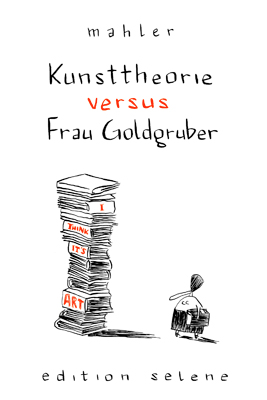

















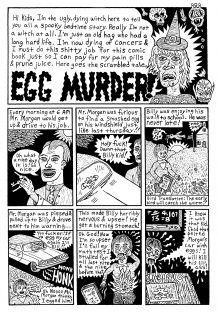




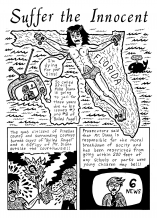
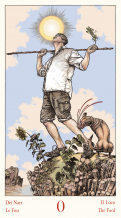
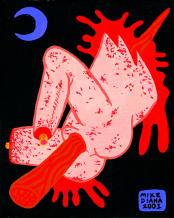
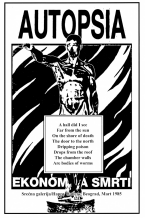


 We Are Rising National Gallery For You! Go to Kyjov by Krásná Lípa no.37.
We Are Rising National Gallery For You! Go to Kyjov by Krásná Lípa no.37.
Comments
There are currently no comments.Add new comment